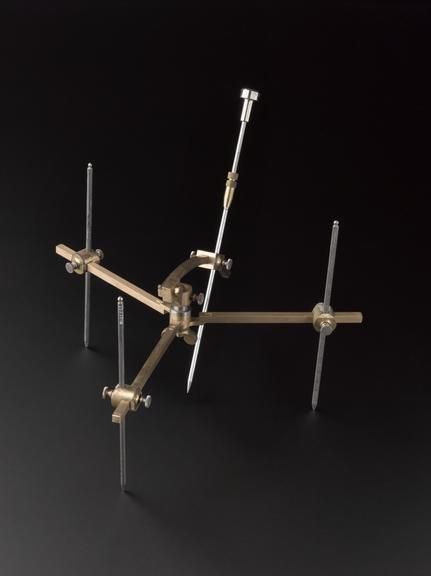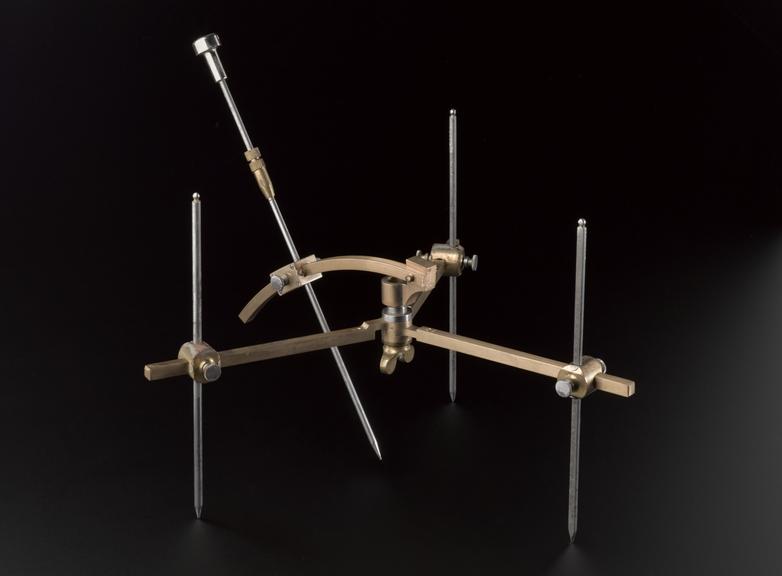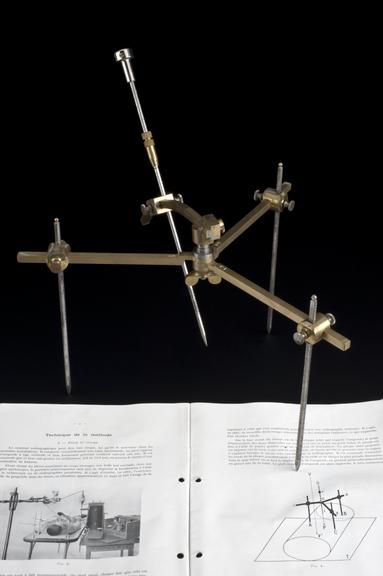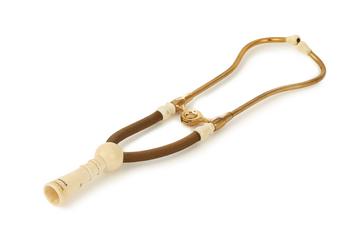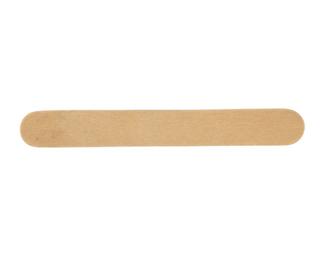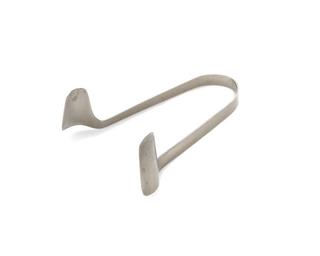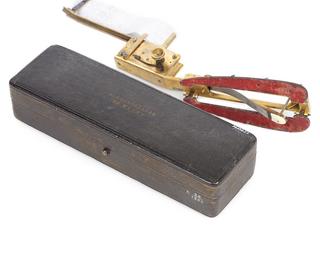Hirtz's compass for locating bullets, Paris, France, 1915
Hirtz's compass, a device for locating shrapnel and other projectiles in the body, constructed of brass and steel and contained in a black leatherette box with the instruction manual, for use by medical personnel during the First World War, made by A. Gaiffe, Paris, France, 1915.
More
Many of those wounded on the battlefields of the First World War (1914-1918) received blast injuries which left metal shrapnel and other projectiles driven deep within the body. When searching for such embedded material it was notoriously hard to follow wound tracks into the tissues safely and accurately. Military surgeons ideally needed a guiding device to avoid straying off target, particularly when treating wounds of the head and other sensitive areas.
This compass is one of a number of devices that were used by the different combatants. It was originally developed in 1907 by E J Hirtz, a French medical officer and head of physiotherapy at a military hospital. Used in conjunction with X-rays, in optimum conditions the frame-like structure with its central ‘penetration needle’ could help a surgeon pinpoint fragments to within one or two millimetres. They were used extensively during the First World War.
- Measurements:
-
overall: 240 mm x 330 mm x 280 mm, 2.5 kg
- Materials:
- complete , paper , brass (copper, zinc alloy) , steel (metal) and cast iron
- Object Number:
- A182732 Pt1
- type:
- bullet locator
- Image ©
- The Board of Trustees of the Science Museum



